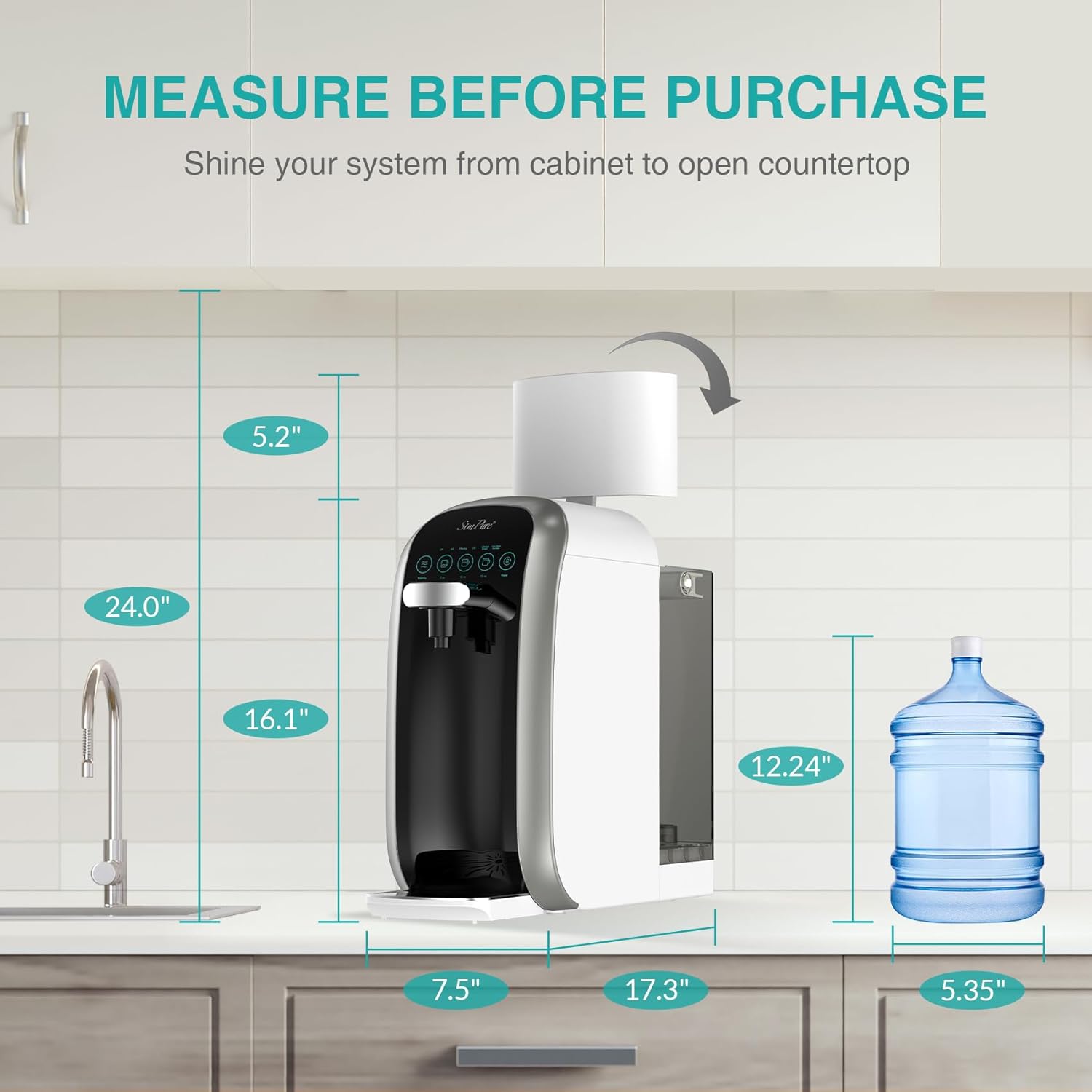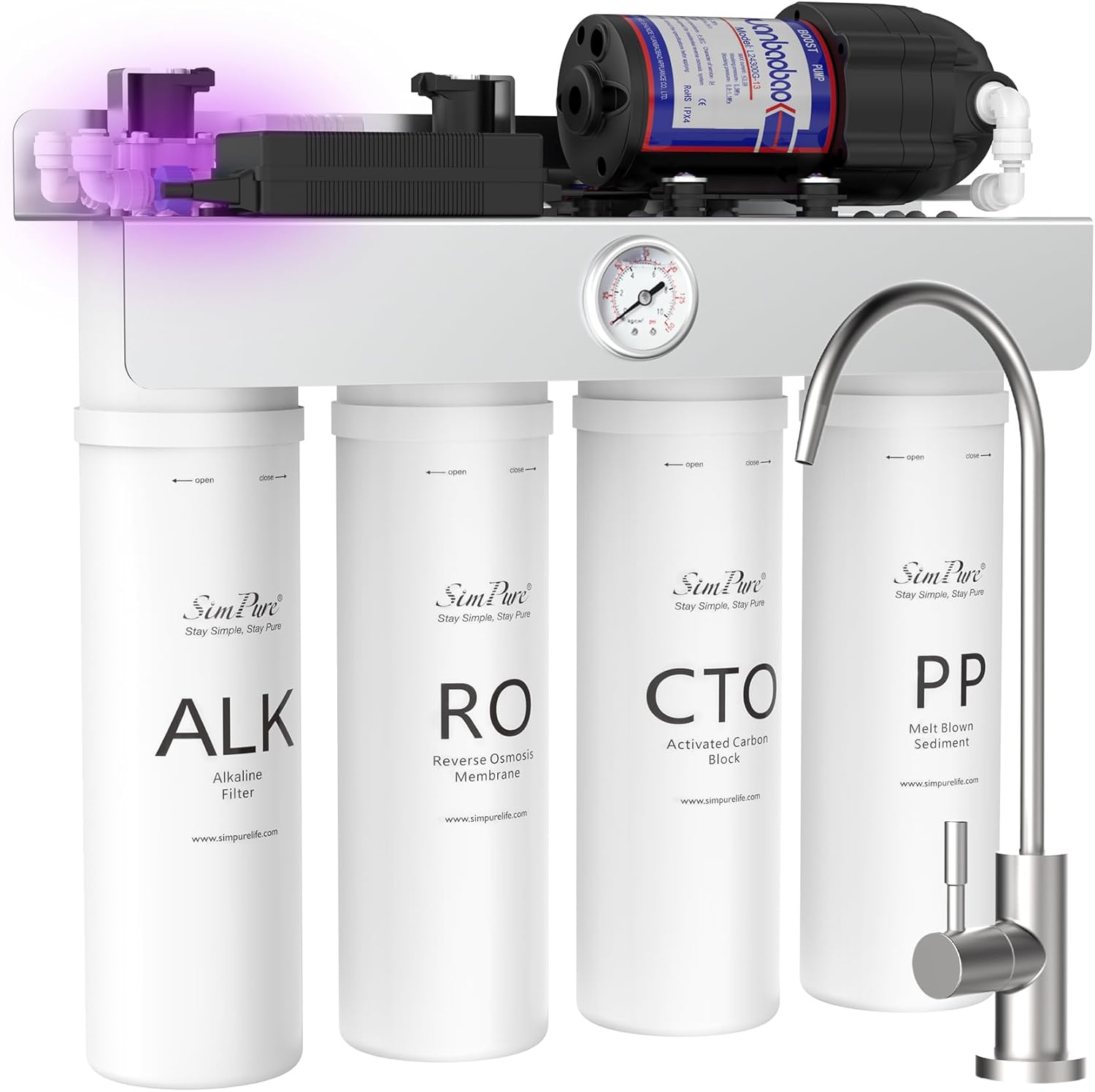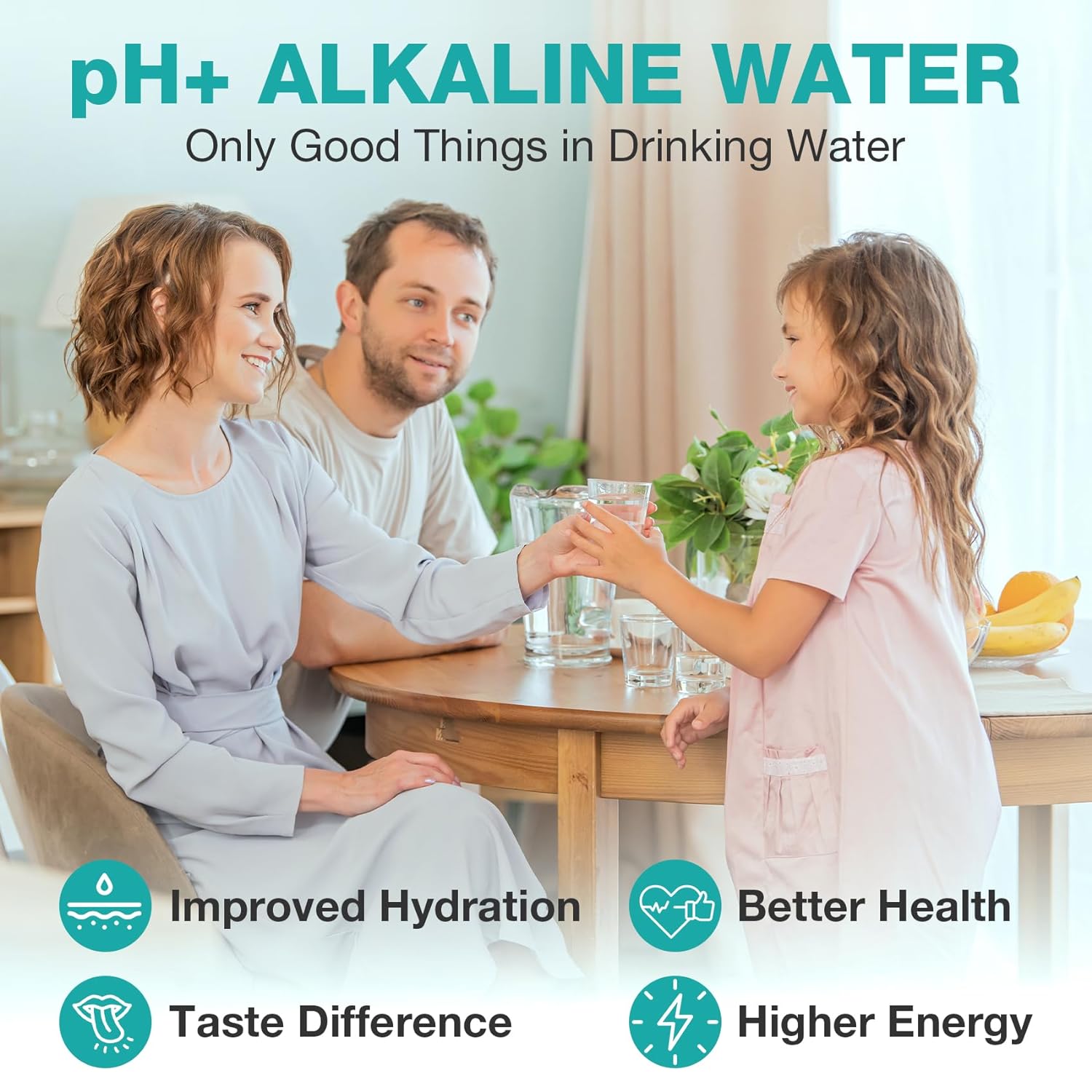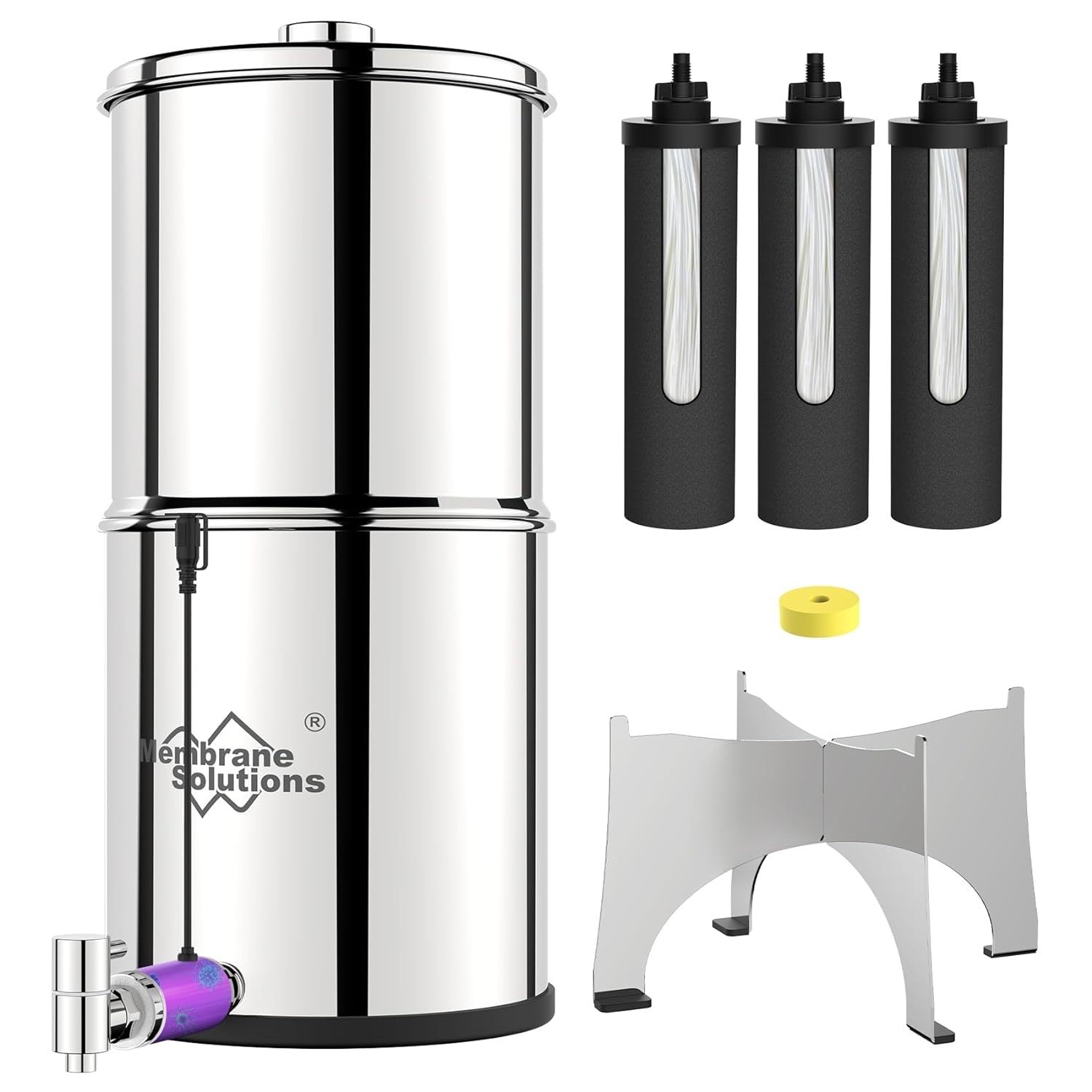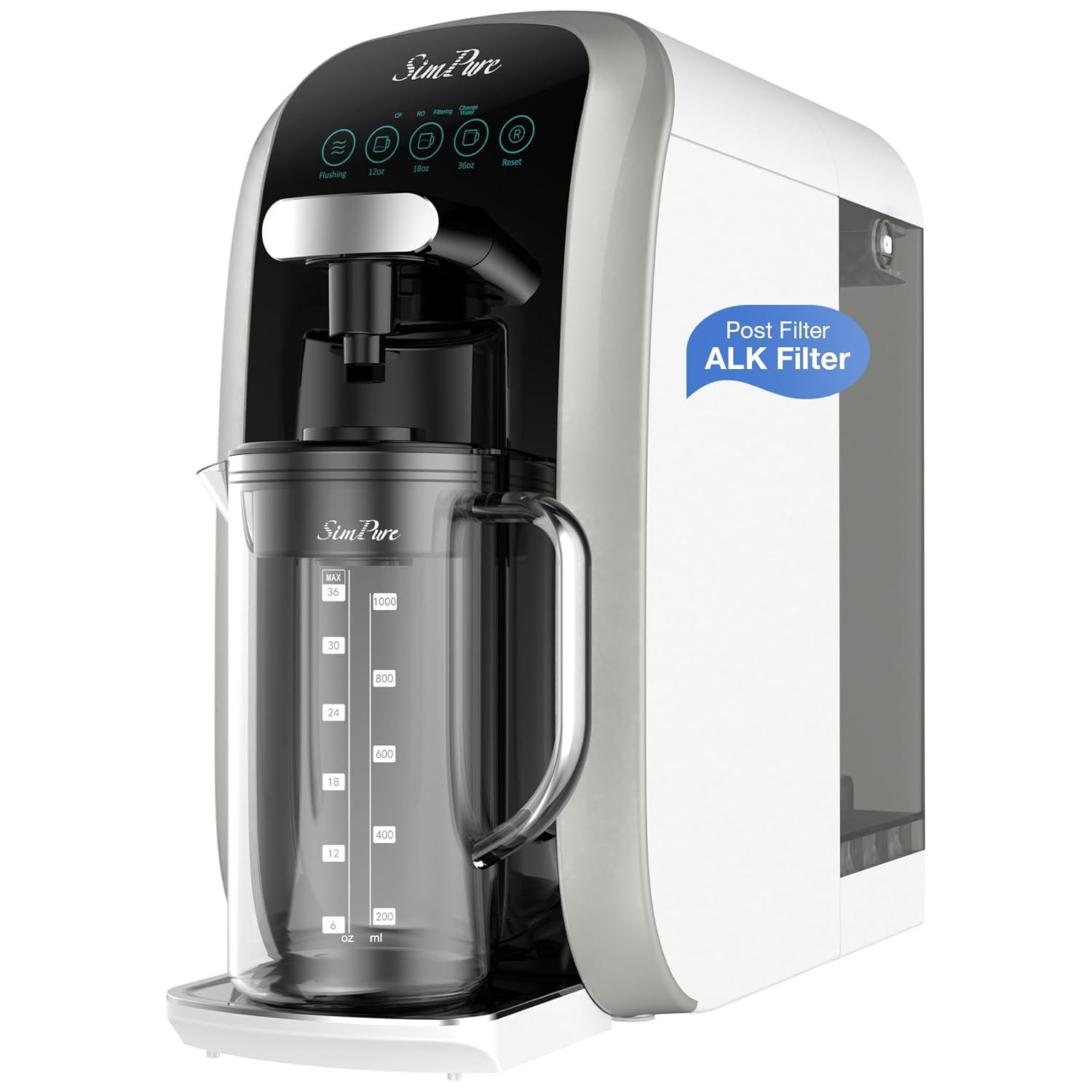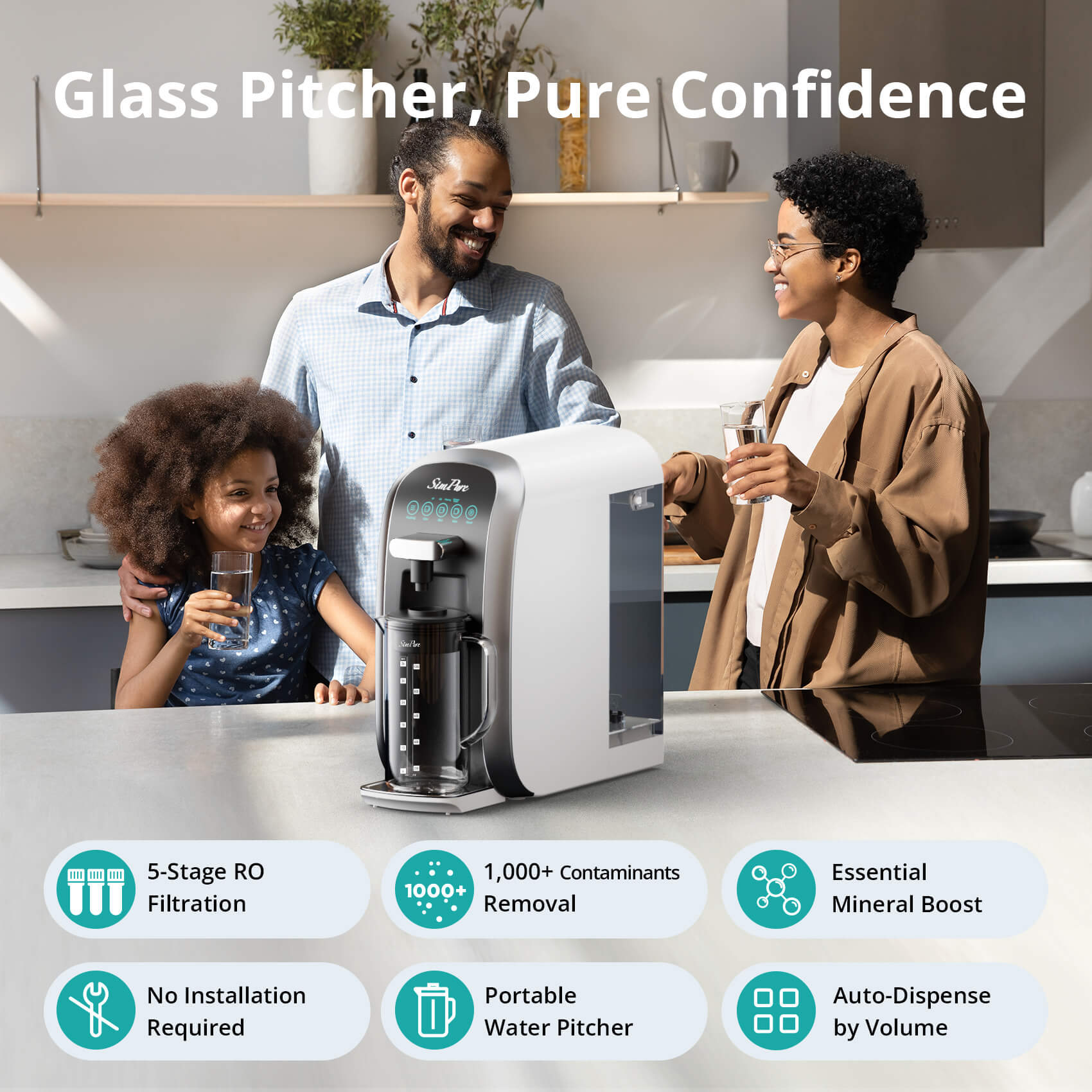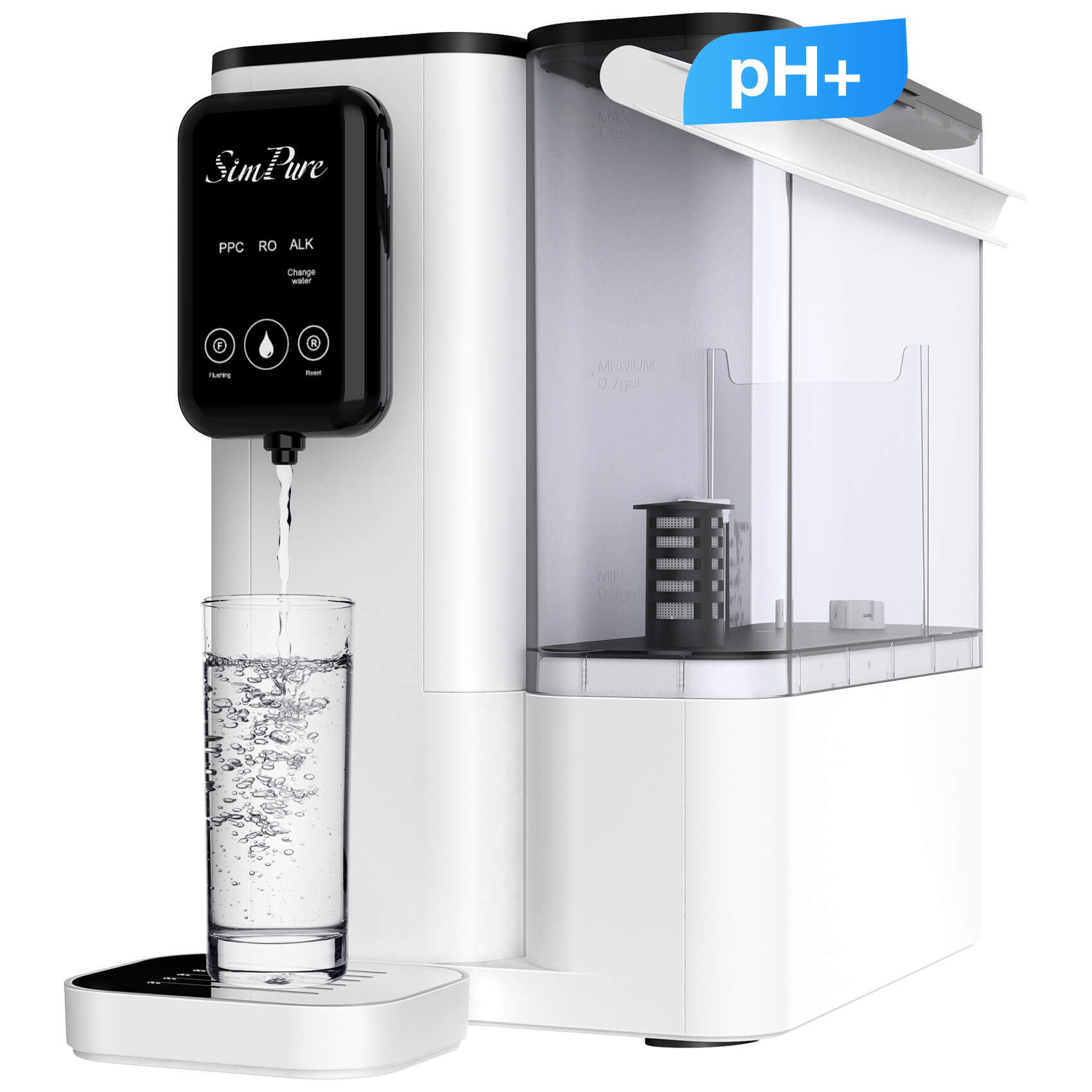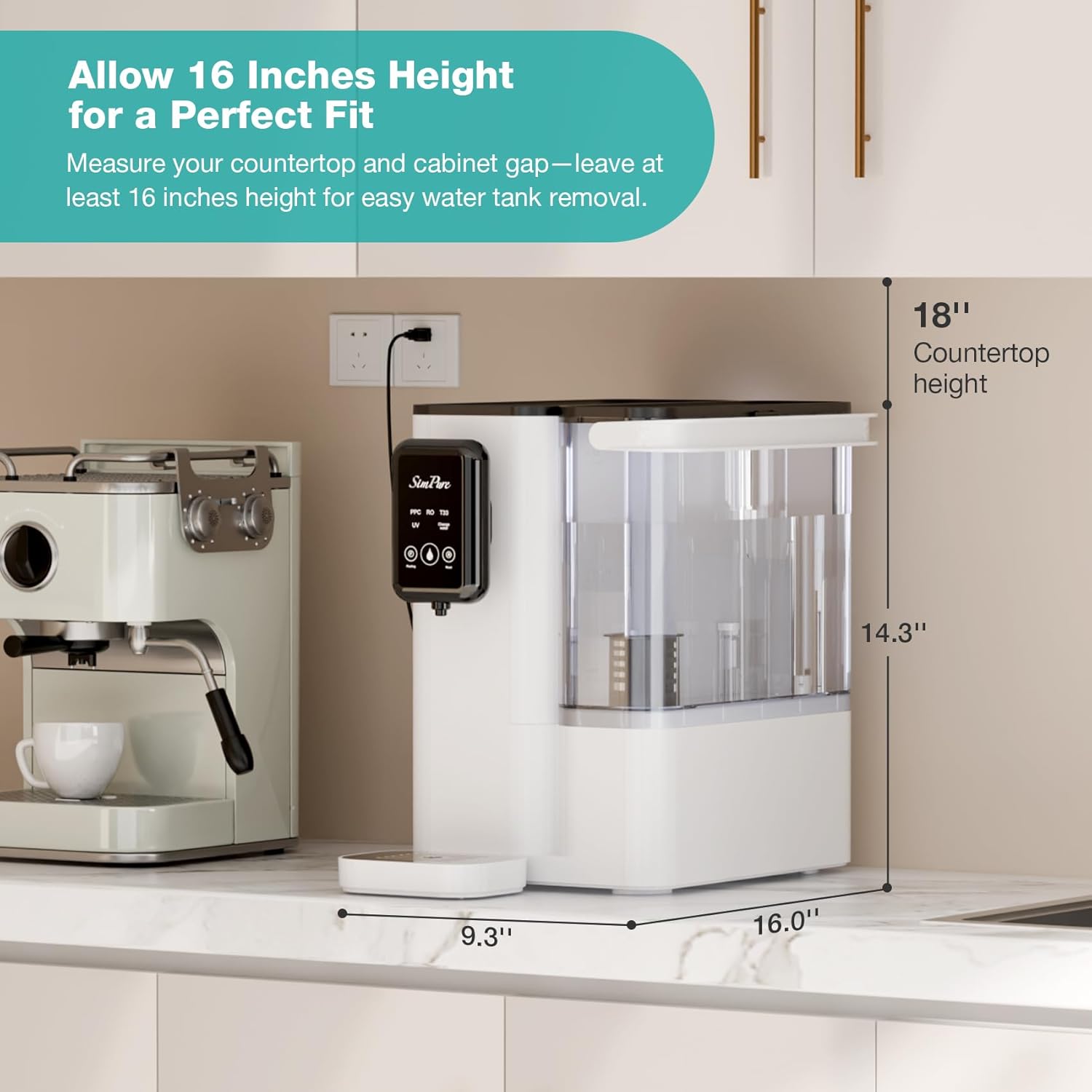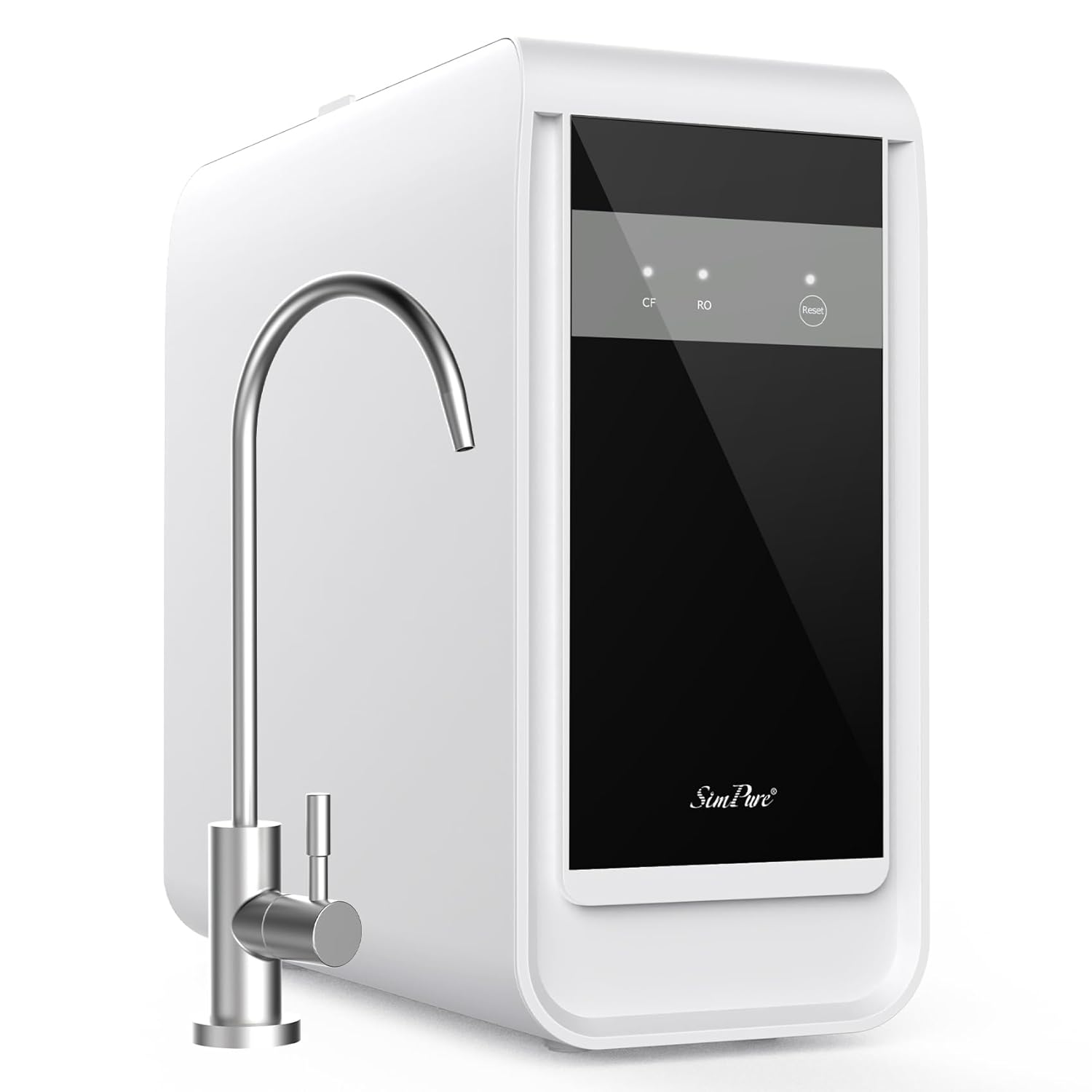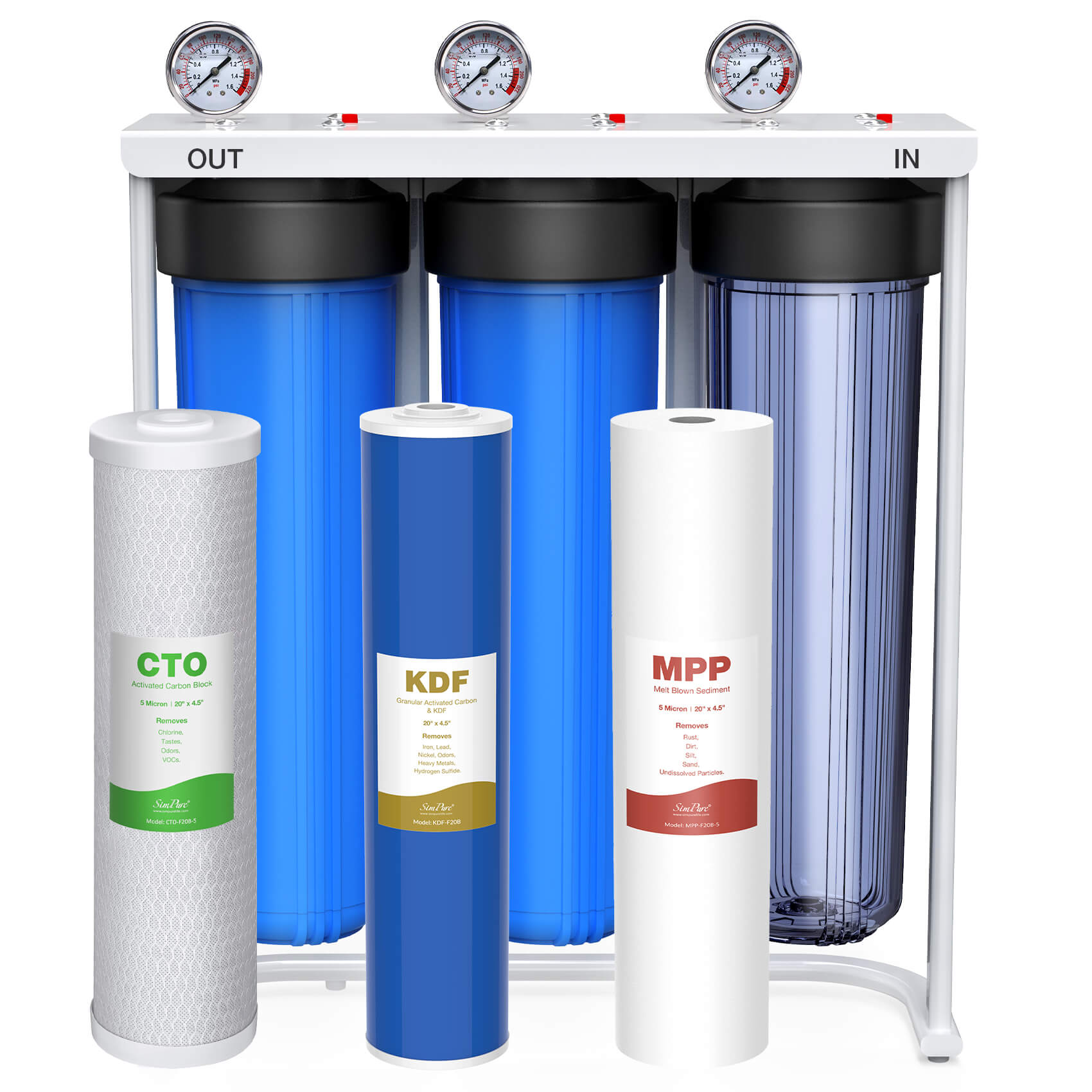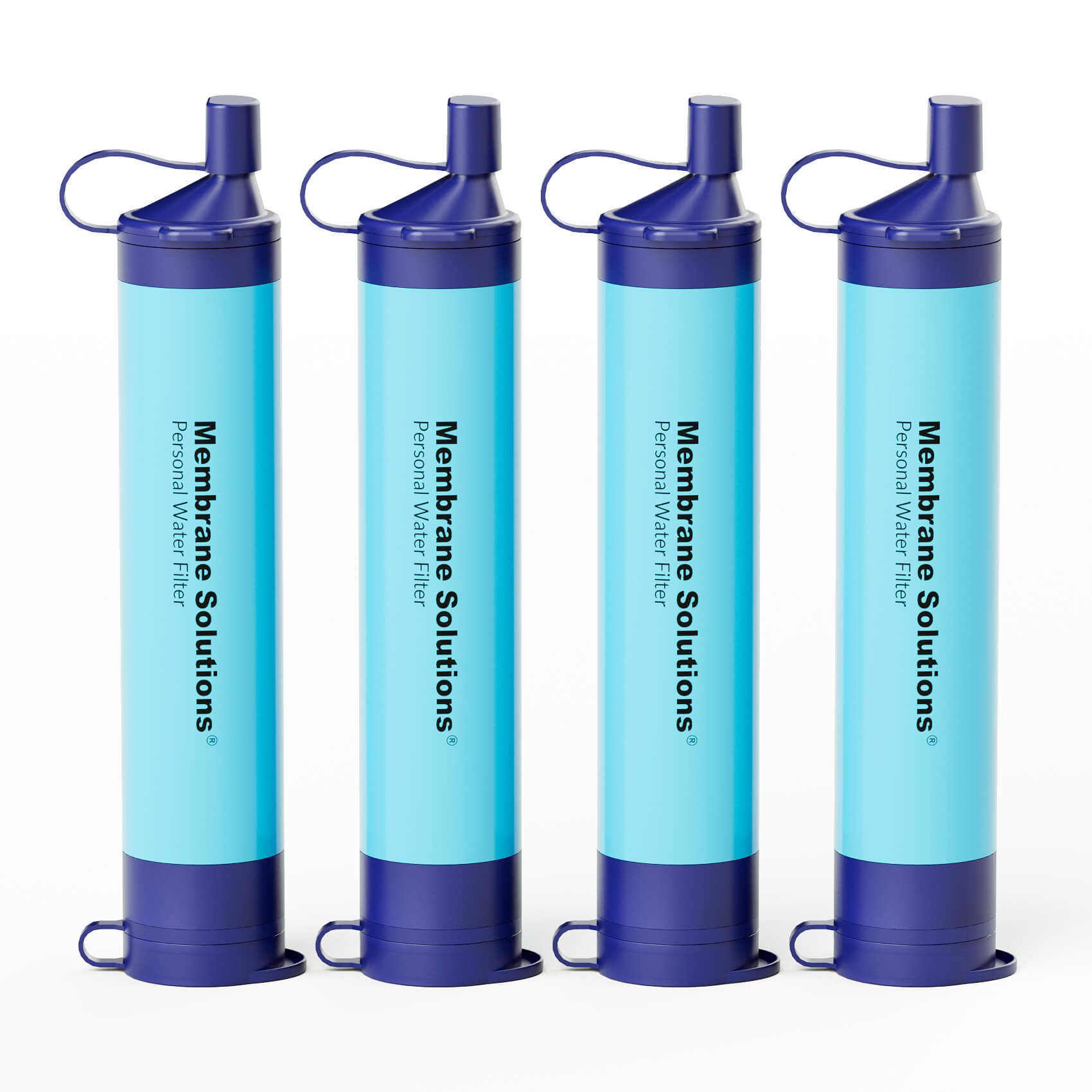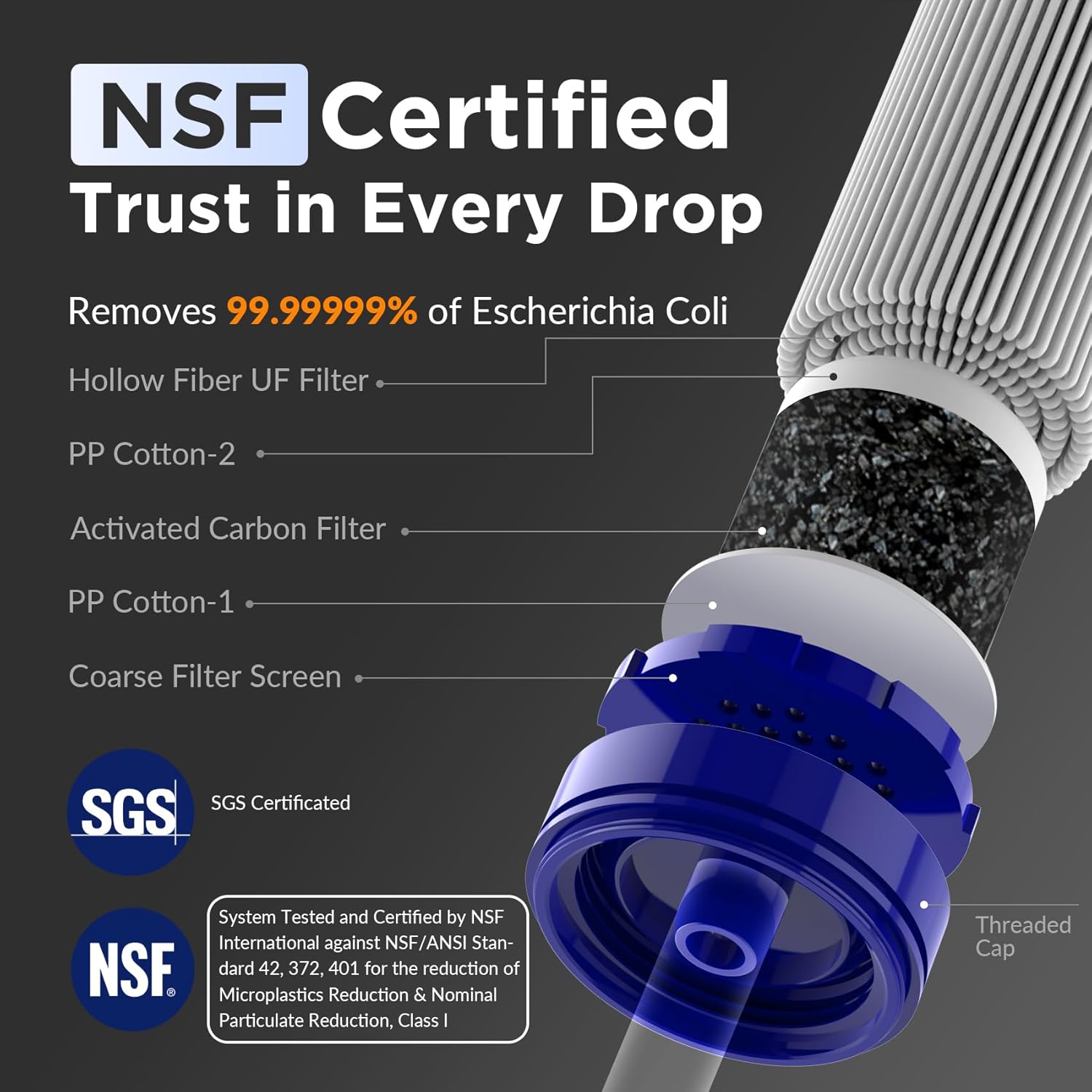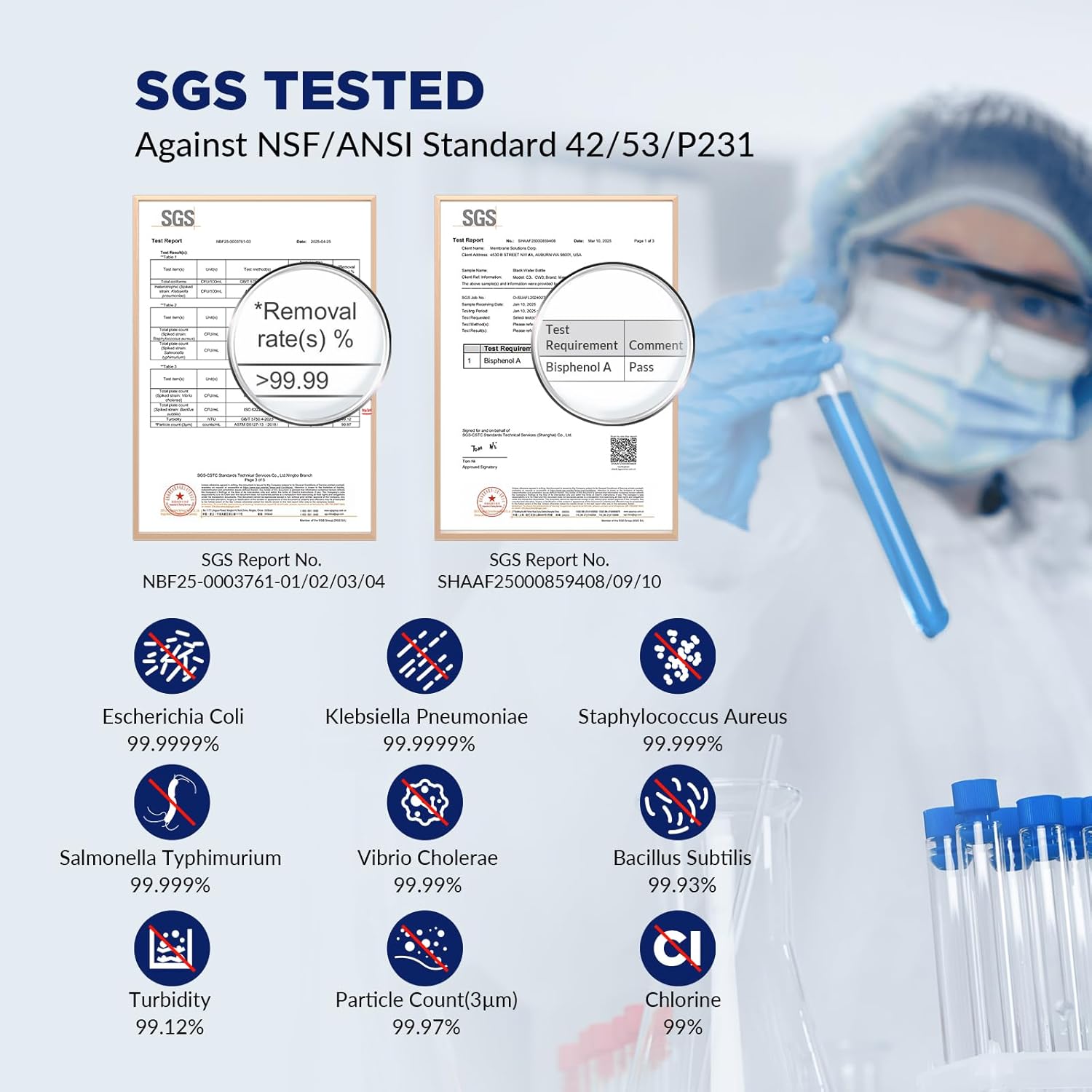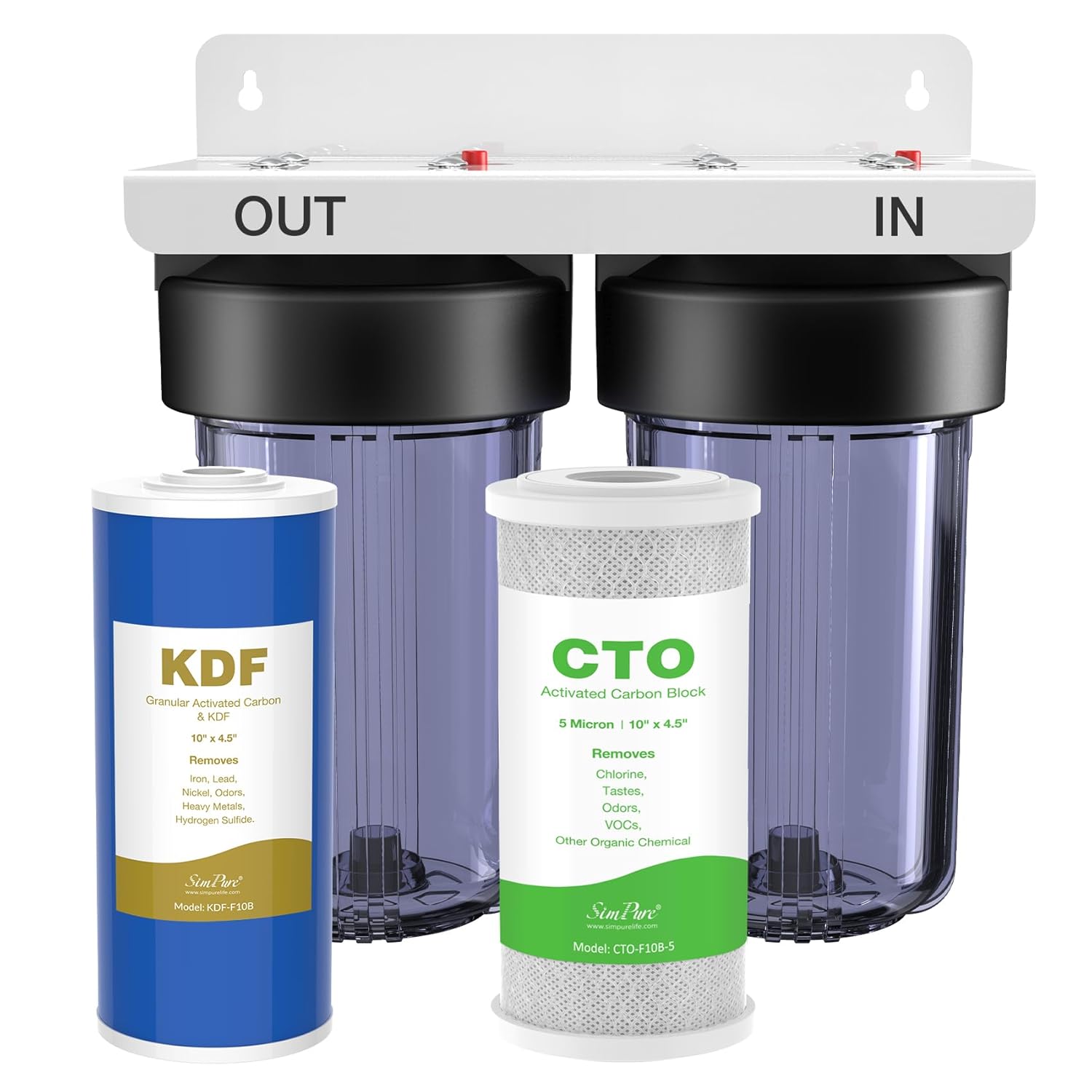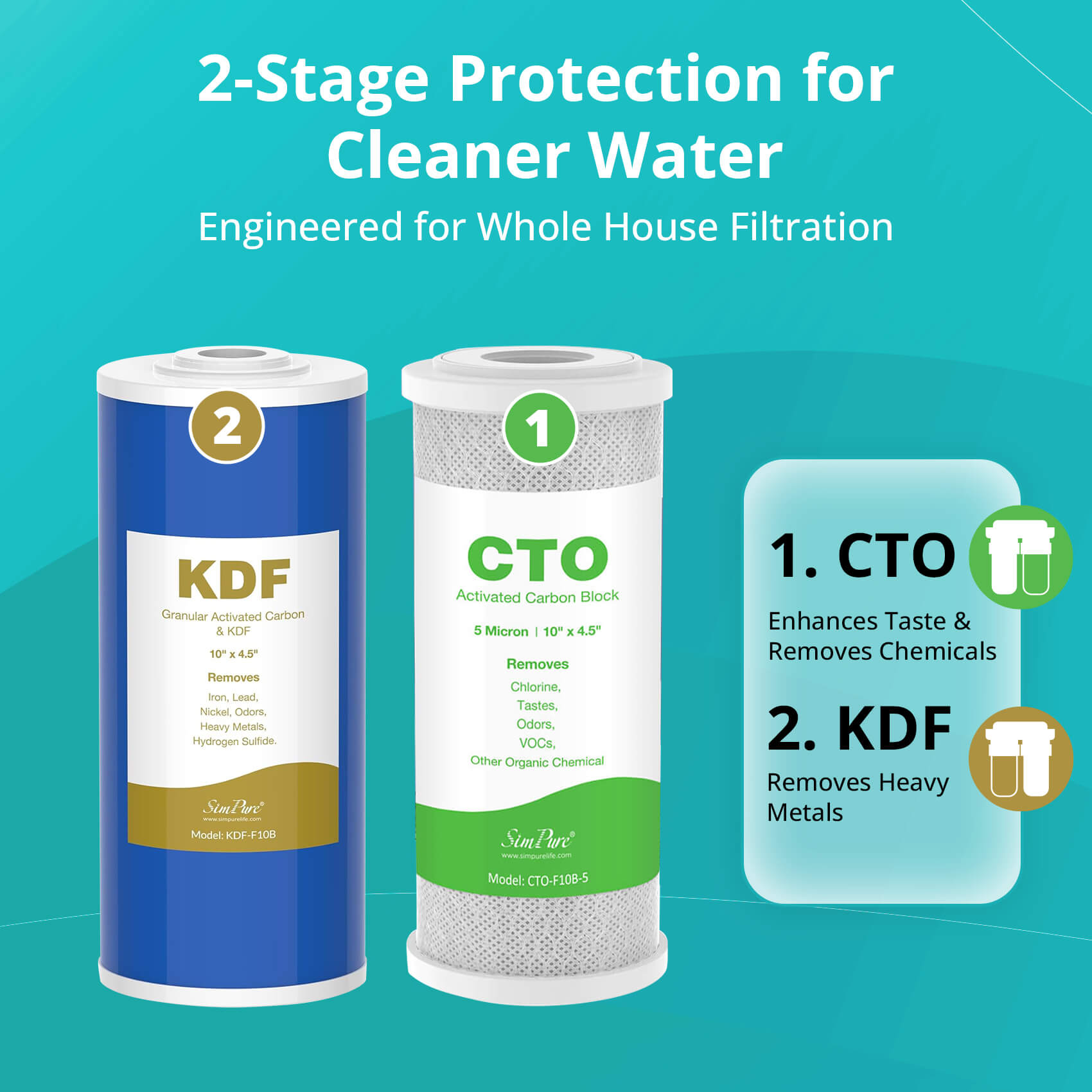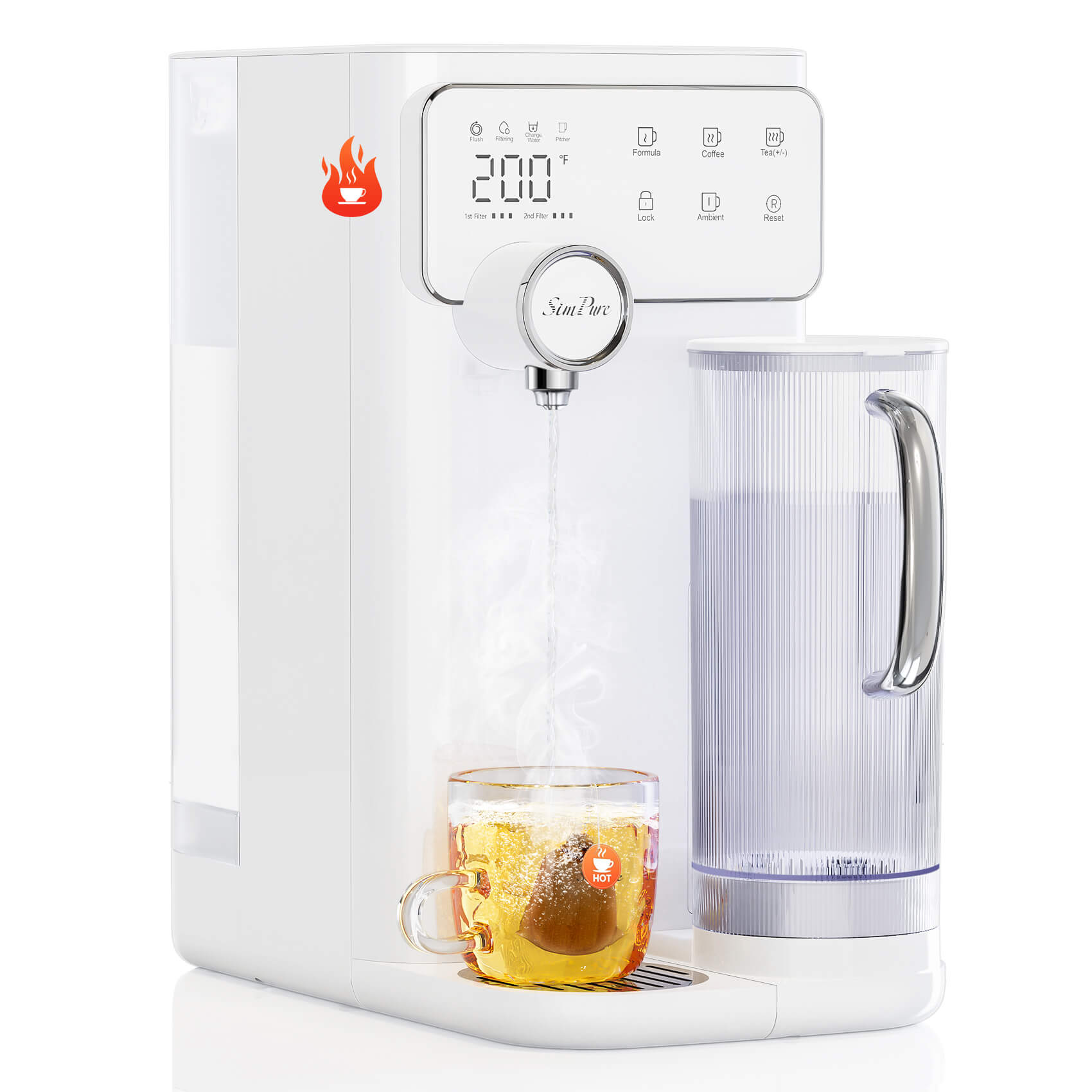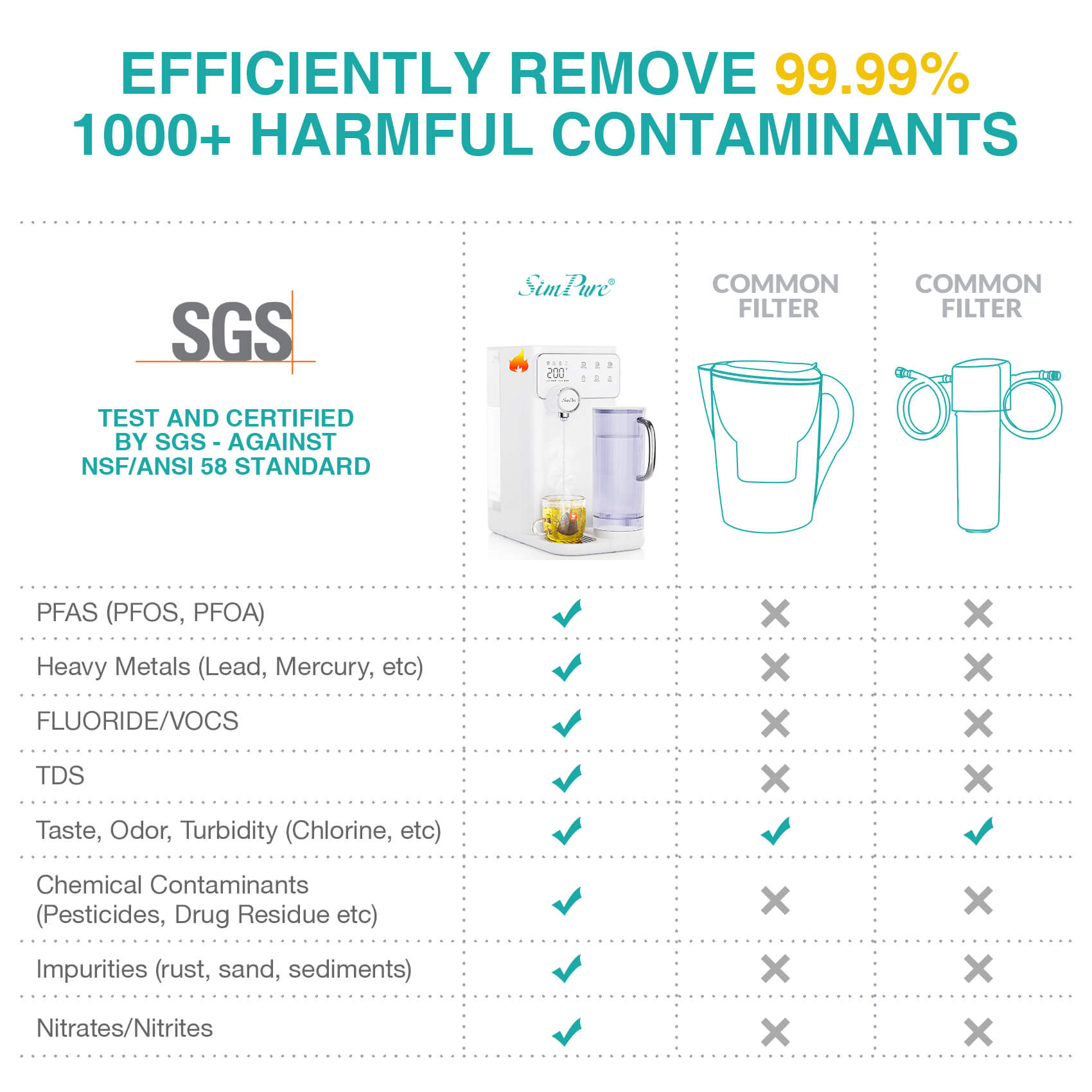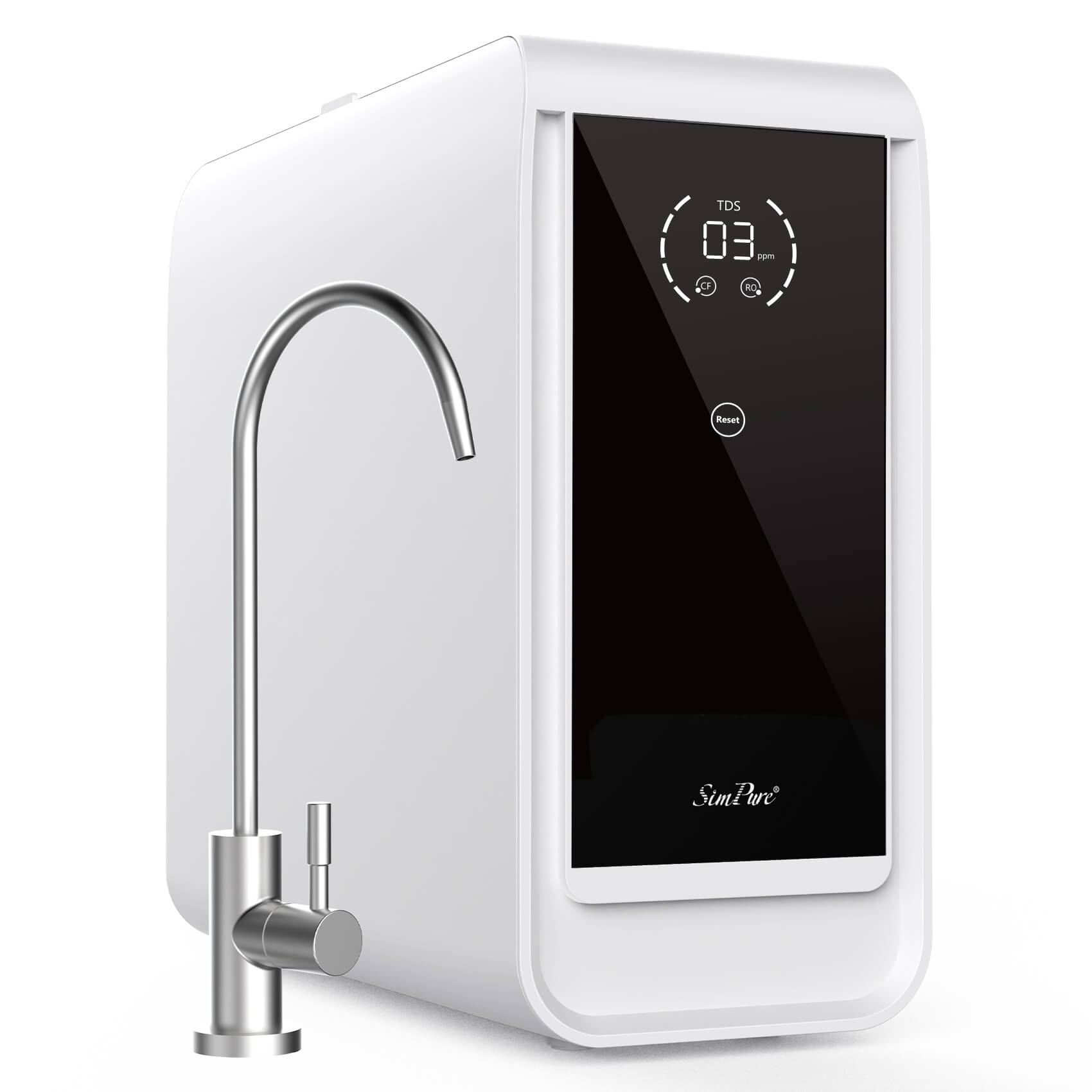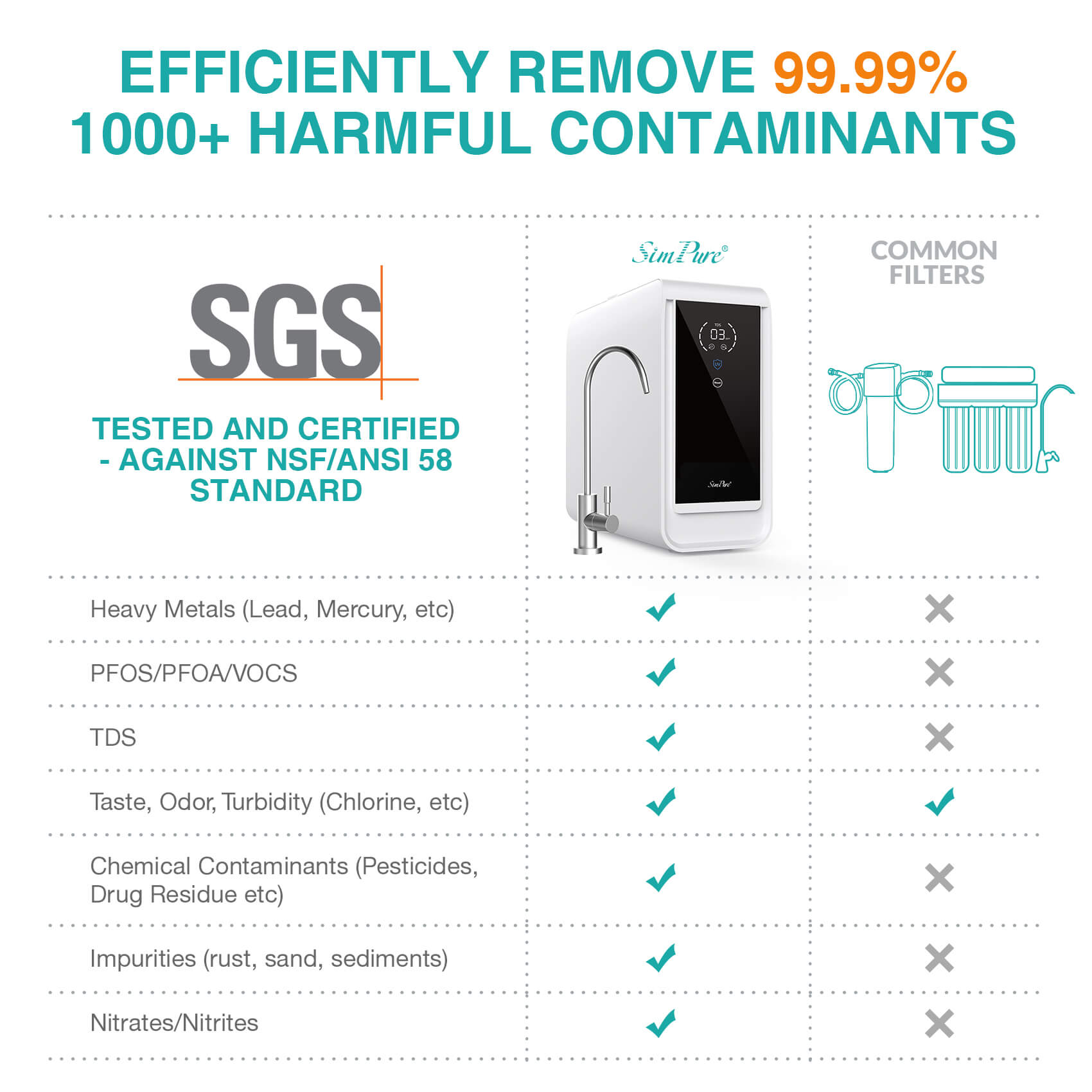If your home relies on a well, you know the water doesn’t always come out clean or fresh. Well water is a dependable source, but it can carry unwanted contaminants like sediment, bacteria, or minerals. These issues affect your health, plumbing, and even the taste of your water. That’s why it’s important to know how to choose the right water purification system for your well. Just keeping reading~
Why You Need a Water Purification System for Wells?

Many people assume well water is naturally clean, but that isn’t always the case. Contaminants such as iron, sulfur, or harmful bacteria can seep into groundwater, making untreated water unsafe. Here we will explore the common well water problems:
1. Sediment and Dirt
What it is: Small particles of sand, silt, and rust that enter from the soil or old pipes.
Why it matters: Sediment makes water look cloudy and can clog plumbing fixtures and appliances. Over time, it reduces water pressure and damages water heaters and dishwashers.
2. Iron and Manganese
What it is: Naturally occurring minerals often found in groundwater.
Why it matters: These leave orange or black stains on sinks, tubs, and laundry. They can also give water a metallic taste and cause buildup inside pipes.
3. Hard Water (Calcium and Magnesium)
What it is: High levels of calcium and magnesium minerals in the water.
Why it matters: Hard water causes scale buildup in pipes, reduces appliance efficiency, and makes soap less effective. You may notice dry skin, dull hair, or spots on dishes after washing.
4. Bacteria and Microorganisms
What it is: Harmful organisms like coliform bacteria, E. coli, or viruses that seep into wells through cracks or surface runoff.
Why it matters: These microorganisms pose serious health risks, causing stomach illnesses or infections. They often require immediate treatment with ultraviolet (UV) purification or chlorination.
5. Nitrates and Nitrites
What it is: Contaminants from fertilizers, animal waste, or septic systems that leak into groundwater.
Why it matters: High nitrate levels are especially dangerous for infants, causing “blue baby syndrome.” They also indicate possible pollution in the water source.
6. Sulfur (Hydrogen Sulfide Gas)
What it is: A natural gas often found in deep wells.
Why it matters: It gives water a “rotten egg” smell and can corrode plumbing fixtures. While not always harmful to health, it makes water unpleasant to drink or cook with.
7. Chemicals and Pesticides
What it is: Runoff from farms, factories, or household chemicals that seep into groundwater.
Why it matters: Some of these contaminants are toxic, linked to long-term health risks such as liver damage or cancer. Activated carbon filters or reverse osmosis systems are often needed to remove them.
8. Low pH (Acidic Water)
What it is: Water with a pH below 7, often caused by natural soil conditions.
Why it matters: Acidic water corrodes pipes, leading to leaks and leaching metals like copper or lead into drinking water. You may notice blue-green stains in sinks or tubs.
How to Choose the Right Water Purification System for Your Well?
Now that you know the common issues with well water, the next step is figuring out the right solution. Every well is different, so choosing a system requires more than guesswork. To make the best decision, let’s walk through the key steps in how to choose the right water purification system for your well.
1. Test well water quality before selecting purification system.
The very first step in choosing a water purification system for wells is testing your water quality. You can use a DIY test kit for basics like hardness, pH, and iron, but for accurate results, send a sample to a certified laboratory.
How to test: Collect water in a clean sample bottle following instructions, then send it for analysis.
2. Identify common contaminants like iron, bacteria, and nitrates.
Once you have your water test results, the next step is to identify the contaminants present. Each problem points to a specific type of purification system.
Reading results:
- High bacteria count → You need UV purification or disinfection.
- High nitrates/nitrites → Reverse osmosis is recommended.
- Iron or manganese → Install an iron filter or oxidizing system.
- Hardness (calcium/magnesium) → A water softener is needed.
- Low pH → Requires neutralizing filters like alkaline filter system.
3. Match purification method to specific water quality issues.
Once you know your well water quality, the next step is to match problems with the right solutions in detail to know what type of water filtration system is best with well water.
- High bacteria count → UV purification or disinfection
If testing shows elevated bacteria levels, it indicates your water may contain harmful microorganisms, including E. coli or coliform bacteria. To make water safe for drinking and household use, a UV (ultraviolet) disinfection system is recommended. UV systems expose water to UV light, which kills bacteria and viruses without chemicals, making it an effective and chemical-free method for well water disinfection.
- High nitrates/nitrites → Reverse osmosis is recommended
Elevated nitrates or nitrites often come from agricultural runoff or fertilizers and are especially dangerous for infants and pregnant women, potentially causing conditions like methemoglobinemia (“blue baby syndrome”). Reverse osmosis systems are highly effective at reducing these dissolved inorganic compounds, filtering water through a semipermeable membrane to remove up to 95–99% of nitrates/nitrites.
- Iron or manganese → Install an iron filter or oxidizing system
High iron or manganese can cause a metallic taste, staining of laundry and fixtures, and pipe buildup. An iron or manganese filter (often with an oxidizing process) converts dissolved metals into solid particles that are then filtered out. Options include air injection, chemical oxidation, or specialized media filters, depending on water composition and concentration levels.
- Hardness (calcium/magnesium) → A water softener is needed
Hard water contains high levels of calcium and magnesium, which can cause scale buildup on pipes, appliances, and fixtures, reduce soap efficiency, and damage water heaters. A water softener exchanges hardness minerals for sodium or potassium ions, reducing scale and improving water usability for cleaning, bathing, and appliance efficiency.
- Low pH → Requires neutralizing filters like alkaline filter system
If water is acidic (low pH), it can corrode pipes, leach metals, and create a metallic taste. A neutralizing filter, often containing calcite or magnesium oxide, raises the water’s pH to safe levels. Some systems also use an alkaline filter, which increases pH while improving taste and providing mild mineral content for drinking water.
👉 Each option can be used alone or combined in a multi-stage system depending on your well water test results.
4. Consider system capacity, household size, and daily usage.
After identifying contaminants and potential purification methods, it’s essential to ensure the system can handle your household’s needs.
Determine daily water usage: Calculate how much water your family uses for drinking, cooking, bathing, and laundry. For example, a typical household uses 50–100 gallons per person per day.
Match system capacity:
- Point-of-use systems (like under-sink RO) handle drinking/cooking water but not whole-house needs.
- Whole-house systems filter all water entering the home and require higher flow rates (5–15 gallons per minute).
Consider peak demand: Make sure the system can provide enough water during high-use times.
Solution: Choose a system with sufficient filter stages and storage capacity or install multiple systems (e.g., a whole-house filter plus under-sink RO) for consistent water supply.
5. Evaluate installation requirements, maintenance needs, and replacement costs
After choosing the right purification method, it’s important to consider practical aspects of installation and upkeep.
Installation requirements:
- Point-of-use systems (under-sink RO, UV units) are easier to install yourself with basic plumbing skills.
- Whole-house systems usually require professional installation due to plumbing complexity and flow requirements.
Maintenance needs:
- Check how often filters or membranes need replacement (e.g., sediment filters: 6–12 months, RO membranes: 2–3 years, UV bulbs: annually).
- Regular cleaning of pre-filters prevents clogging and extends system life.
Replacement costs:
- Factor in long-term expenses, including filters, membranes, and UV bulbs.
- Consider warranties and support options from manufacturers.
6. Balance budget with long-term durability and filtration effectiveness.
Choosing a well water purification system isn’t just about upfront cost—it’s also about long-term value.
Compare upfront cost vs. lifetime cost:
- A cheaper system may save money initially but require frequent filter replacements or repairs.
- More expensive systems often last longer and provide more consistent water quality.
- Assess filtration effectiveness:
- Ensure the system can remove the contaminants identified in your water test.
- Multi-stage systems may cost more but handle multiple issues (hardness, bacteria, iron, nitrates) in one setup.
Consider durability and warranty:
- Look for certified, reliable brands with solid warranties.
- Durable materials reduce maintenance and unexpected replacements.
Best Recommandations: SimPure Whole House Water Purification System for Well (LOW COST)
When it comes to well water purification that is both effective and budget-friendly, SimPure offers practical solutions tailored for households looking to protect their plumbing, appliances, and family health without overspending. Their range of whole-house pre-filters ensures that sediment, rust, sand, and other common well water contaminants are removed before they reach faucets or appliances, extending the lifespan of downstream filters. Here are our best 3 Water Purification System for Well:
1. SimPure DC5P Reusable Whole House Spin Down Sediment Filter

The SimPure DC5P is ideal for well water because it combines durability, efficiency, and low maintenance. Its 40μm stainless steel mesh effectively captures sediment, rust, sand, and calcium before they reach household plumbing. Reusable and flushable, it reduces strain on downstream filters while protecting water heaters, faucets, and appliances. Easy to install with flexible threaded connections, this spin-down filter offers reliable, long-term performance, making it a top choice for homeowners who need consistent, practical protection for their well water supply.
2. SimPure DB20P-3KDF 3-Stage Whole House Heavy Metal Water Filtration System
The SimPure DB20P-3KDF filter excels for well water because it combines triple-stage filtration with heavy metal reduction. Its PP sediment filter removes sand, rust, and debris, while the upgraded KDF stage eliminates over 98% of heavy metals like lead, arsenic, and iron. The final CTO carbon block improves taste and reduces chlorine and chemicals. With a 100,000-gallon lifespan, fast flow rate, and easy DIY installation, it provides comprehensive protection for household plumbing, appliances, and water quality, making it one of the most reliable whole-house systems for well water.
3. SimPure DB10C-2 2-Stage Whole House Water Filtration System
The SimPure DB10C-2 whole house filter is ideal for well water because it combines effective 2-stage filtration with user-friendly design. The 5-micron sediment filter removes dirt, sand, rust, and debris, while the CTO carbon block reduces chlorine, odors, and industrial chemicals. Transparent housings allow easy monitoring, and brass fittings with dual O-rings prevent leaks. With a 50,000-gallon capacity and easy DIY installation, this system protects appliances, pipelines, and faucets, offering a practical and reliable whole-house filtration solution for households using municipal or well water.
For optimal well water protection, these SimPure systems can be combined for enhanced filtration. Start with the DC5P spin-down sediment filter to remove larger particles, then use the DB20P-3KDF 3-stage system for heavy metals, fine sediment, and chlorine. For ultra-purified drinking water, you can also add an RO system. The exact setup depends on your water test results and household needs. If you’re unsure about the best combination, our online customer service team is available to guide you and help customize the ideal filtration solution.
FAQs About Well Water Purification Systems
To help homeowners make informed decisions, we’ve also compiled answers to the most common concerns about well water purification systems.
1. How often should well water be tested?
Well water should be tested at least once a year for bacteria, nitrates, and other common contaminants. After events like flooding, repairs, or changes in taste, color, or odor, additional testing is recommended. If your household uses a private well, more frequent testing—every 6 months—is advisable for families with infants, pregnant women, or elderly members.
2. Can a single system handle all contaminants?
No single filtration system can effectively remove all types of contaminants from well water. Different impurities—such as sediment, heavy metals, bacteria, nitrates, chlorine, and chemical pollutants—require specific filtration methods. For example, sediment filters capture sand and rust, KDF or heavy metal filters remove lead and iron, and carbon or RO systems target chlorine, chemicals, and fine particles. Many households use a combination of filters, like a spin-down sediment filter followed by a multi-stage heavy metal or carbon system, to ensure comprehensive protection.
3. How much does a well water purification system cost?
The cost of a well water purification system depends on its type, capacity, and features. Basic 1–2 stage sediment and carbon filters start around $100–$200. More advanced multi-stage systems with heavy metal reduction or whole-house filtration typically range from $300–$800. High-end setups that include RO systems or specialized contaminant removal can exceed $1,000. Additional costs may include installation, replacement filters, and maintenance. The final choice should consider your water test results, household size, and specific contaminants, ensuring both effectiveness and long-term value.
4. Do I really need a reverse osmosis system with well water?
Not all well water requires a reverse osmosis system. RO is most beneficial if your water contains high levels of dissolved solids, heavy metals, nitrates, or specific chemical contaminants that standard sediment, carbon, or KDF filters cannot remove. If your well water tests clean for bacteria, heavy metals, and harmful chemicals, a multi-stage filtration system without RO may suffice for everyday use.
5. Do I need both a filter and a softener?
Whether you need both depends on your well water’s quality. A filter removes sediment, rust, heavy metals, chlorine, and other contaminants, while a water softener specifically targets hardness minerals like calcium and magnesium. If your water is hard and contains particles or chemicals, using both ensures clean, soft, and safe water for drinking, cooking, and appliances. If hardness is low but sediment or chemicals are present, a filter alone may suffice.
In conclusion, proper well water purification starts with understanding your water and choosing the right system. Test for contaminants, match filtration methods to water quality, and consider household usage. Combining sediment pre-filters, multi-stage systems, and optional RO units can provide complete protection. To simplify your choices and get the right combination for your home, consult SimPure’s experts or explore their complete range of well water filtration solutions today for reliable, efficient, and long-lasting water protection.
Get SimPure Whole House Well Water Filtration Systems Solutions!






